Ian Fleming’s death in 1964 stopped the official James Bond canon at twelve novels and nine short stories. Obviously Bond’s afterlife in film needs no introduction, but his further adventures on the printed page have been equally energetic, with several authors taking up the challenge of delivering his globe-trotting, megalomaniac-defeating, unlikely-monikered-woman-bedding exploits. Here’s the rundown.
Kingsley Amis
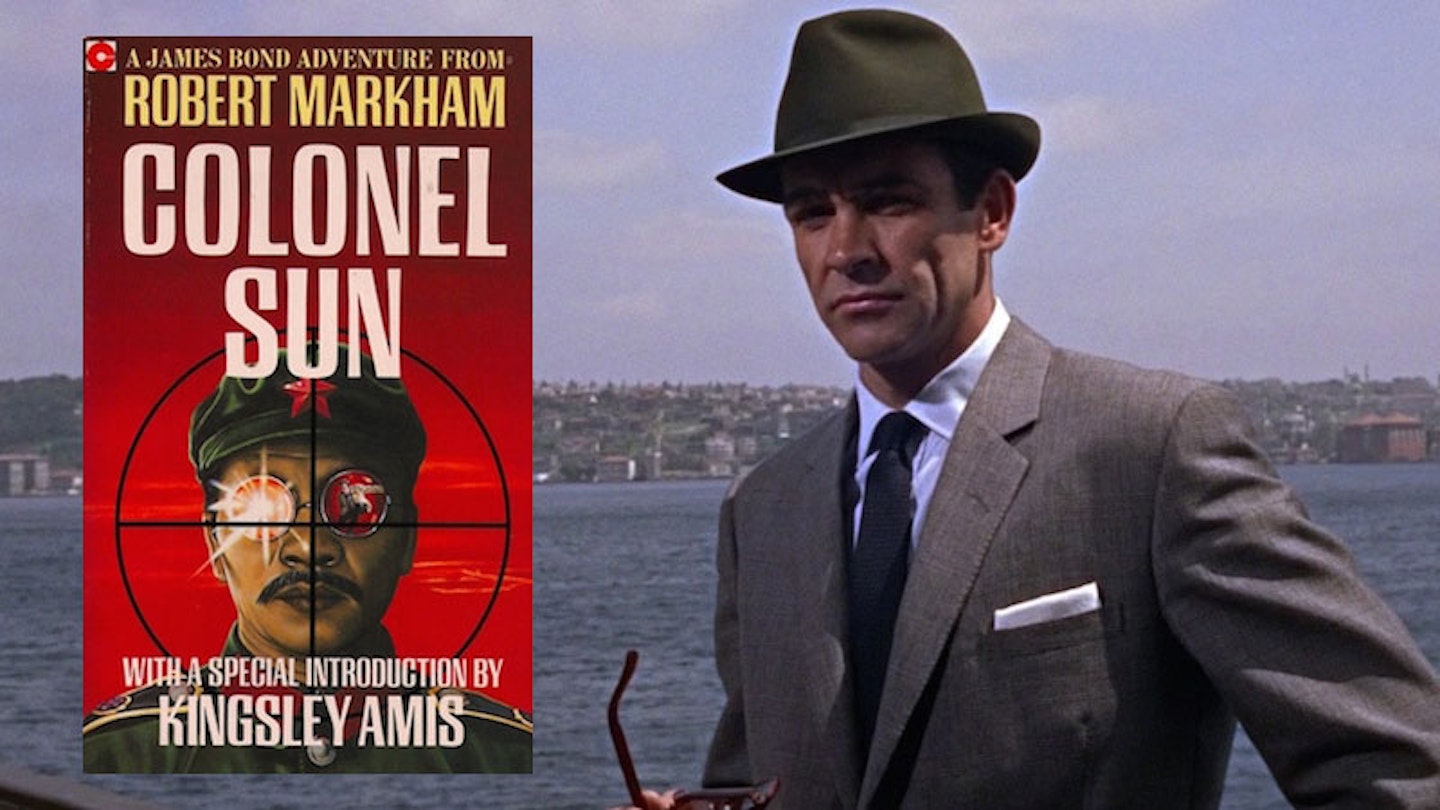
Colonel Sun
"Robert Markham" was intended by rights-holders Glidrose as a collective pseudonym under which different authors would take a turn at a Bond novel, post-Fleming. Kingsley Amis' Colonel Sun was the first and only result of this plan in 1968 (a previous novel in 1967, Geoffrey Jenkins’ Per Fine Ounce, was rejected by Glidrose and never published), and sees Bond trailing a kidnapped M to the Aegean Islands. The dastardly Colonel, employed by the equally dastardly Red Chinese, is plotting a major atrocity against Greece and the West, but also against Russia, leading to a first-time détente in which Bond gets a Russian female assistant. Bond producer Harry Saltzman vetoed the book for filming, but ripples from it reached the movies For Your Eyes Only, The World Is Not Enough and Die Another Day.
Amis was for some time thought to have ghost-written The Man With The Golden Gun, which was published after Fleming’s death. This legend has now been more-or-less entirely dismissed though, and Amis’ Bond is quite different to Fleming’s. "The Bond of Dr. No or Goldfinger would have needed far more in the way of technical expertise than I could supply," said Amis.
Christopher Wood
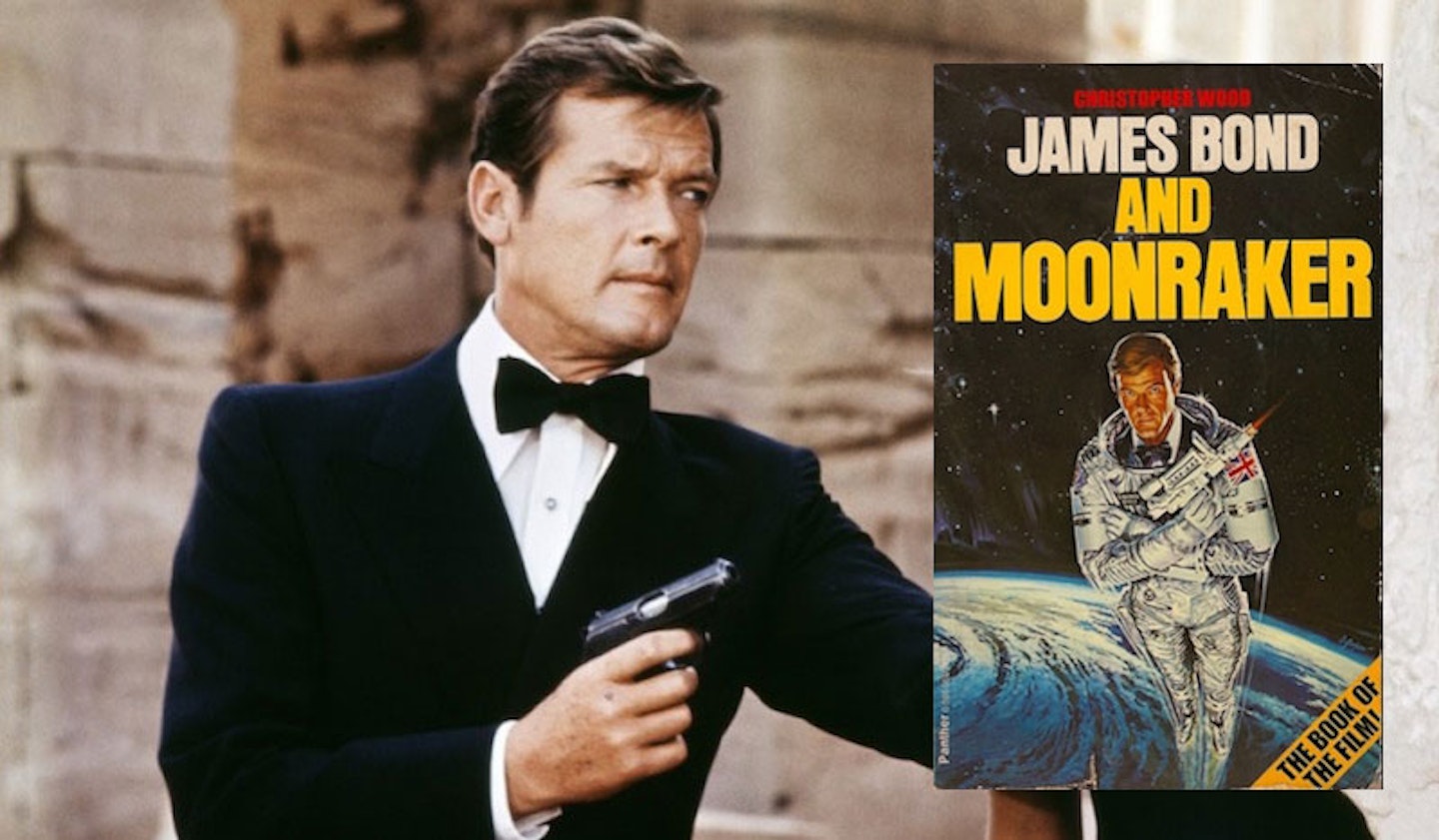
James Bond: The Spy Who Loved Me / James Bond And Moonraker
The Robert Markham experiment stalled at Colonel Sun, so it wasn’t until Christopher Wood novelised his screenplays for The Spy Who Loved Me and Moonraker in 1977 and 1979 – stories so different from their Fleming sources that they count as original fiction - that there was a new Bond author for the list (unless you count 1973’s fictionalised James Bond: The Authorised Biography by John Pearson).
Unsurprisingly, James Bond, The Spy Who Loved Me and James Bond And Moonraker follow their film counterparts closely, but there are fun embellishments, particularly where Jaws is concerned. Jaws, we learn, is called Zbigniew Krycsiwiki (and just try wrapping your metal choppers around that one), and is the Polish son of a circus strong-man and the chief wardress of a women’s prison. His height led him to basketball, but his career ended when he beat a referee to death with a hoop. His jaw was destroyed in a merciless truncheoning by police during the bread riots of 1972, but after stowing away on a Stromberg ship in Gdansk, he was taken on as a henchman and given the steel gnashers we know and love by the Mengele-like ex-Buchenwald surgeon Ludwig Schwenk.
We didn’t make that up.
He's also explicitly mute according to Wood, so he doesn't speak at the end of Moonraker. Or get a girlfriend.
John Gardner

Licence Renewed / For Special Services / Icebreaker / Role Of Honour / Nobody Lives For Ever / No Deals, Mr. Bond / Scorpius / Win, Lose Or Die / Licence To Kill / Brokenclaw / The Man From Barbarossa / Death Is Forever / Never Send Flowers / SeaFire / GoldenEye / COLD
Rights-holders Glidrose decided to bring Bond back in a regular series of novels in 1980, choosing crime writer and ex-journalist John Gardner for the task. Gardner wrote sixteen novels between 1981 and his retirement in 1996 (including novelisations of Licence To Kill and Goldeneye which don’t strictly fit with his own series), beginning with Licence Renewed and ending with COLD. "We all came to the table with the same idea," he told Raymond Benson in 1993. "I wanted to put Bond on ice and resurrect him in 1980 completely intact, with all the knowledge of the previous decade and a half. So much had happened in the world of espionage since the sixties."
Gardner’s Bond aged over his series, approaching a Jack Ryan vibe in the later books. Unable contractually to use Q (who belongs to the films) he invented the female Q’ute as a replacement, although it’s not quite clear why he didn’t just say "Major Boothroyd of Q Branch" which wouldn't have caused any copyright problems at all. The first half dozen novels see Bond up against a reinvigorated SPECTRE (including an instalment, Nobody Lives Forever, involving the kidnap of Moneypenny and Bond’s treasured housekeeper May). Later entries see him taking on a religious cult, a serial killer, and being reassigned to naval duty to protect Thatcher, Bush and Gorbachev.
Gardner’s favourite of his own Bonds was The Man From Barbarossa. Everyone else likes For Special Services.
Raymond Benson
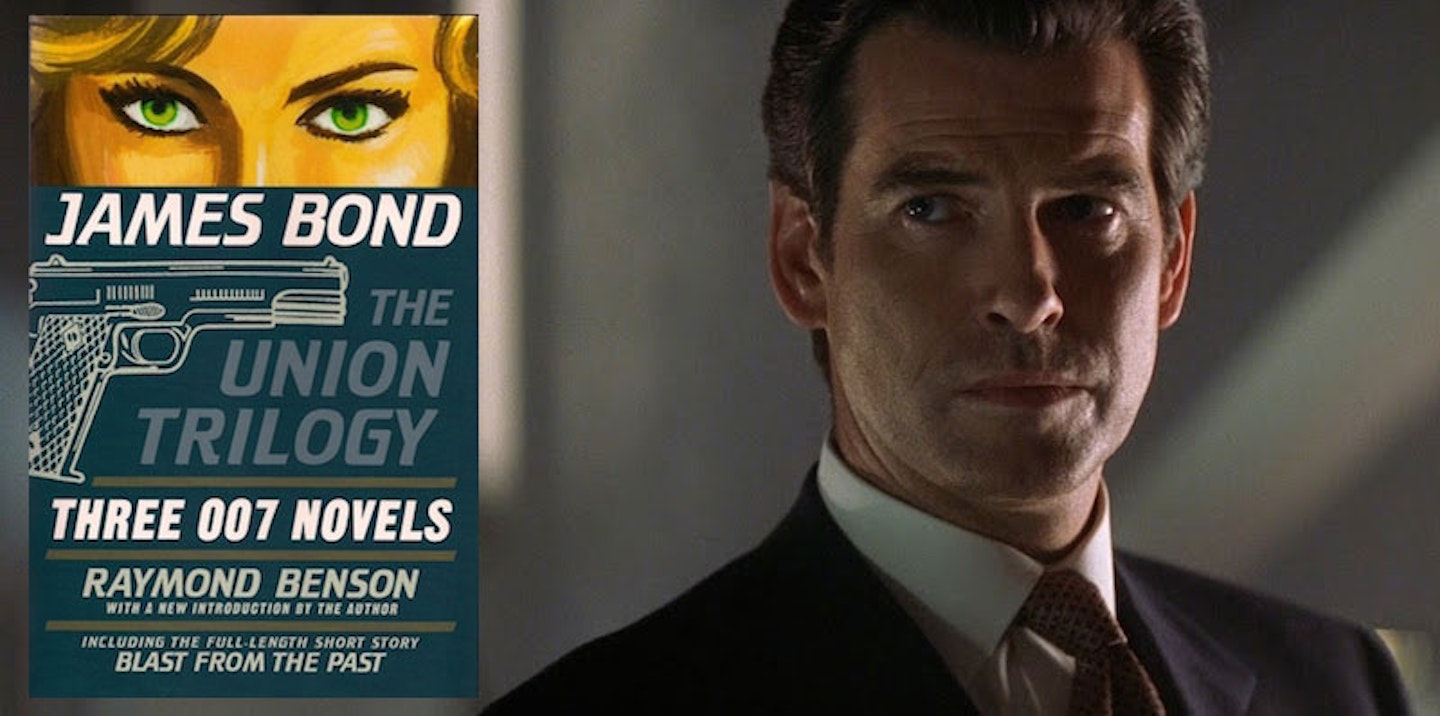
Zero Minus Ten / Tomorrow Never Dies / The Facts Of Death / High Time To Kill / The World Is Not Enough / DoubleShot / Never Dream Of Dying / The Man With The Red Tattoo / Die Another Day
Gardner’s replacement in 1996 was – Shock! Horror! – an American! Raymond Benson had previously been behind The James Bond Bedside Companion, as well as computer games and role-playing campaigns, and ended up writing six original novels, three short stories and three novelisations for the series, ending with The Man With The Red Tattoo in 2002. His tenure ran alongside Pierce Brosnan’s onscreen stint as Bond, but while the female M imposed on him by Glidrose "couldn’t help but be Judi Dench", he tells Empire his Bond isn’t Brosnan, but "the guy I envisioned back in the sixties when I first read the Flemings." He neither particularly acknowledges or much contradicts the Gardner chronology, but restores the Walther PPK to Bond’s holster (Gardner gave him a semi-automatic Browning), and reinstates Boothroyd at Q Branch.
All Benson’s novels can stand alone, but three are connected as a trilogy involving The Union: a new enemy organisation to replace SPECTRE and SMERSH, headed by the shady and mysterious Le Gerant. Best of the bunch is High Time To Kill, an Eiger Sanction-ish Nepal-set mountaineering adventure, where Bond races several dangerous rivals to a McGuffin at the site of a plane crash near the summit of Kangchenjunga. "Ian Fleming was a huge fan of climbing when he was young," says Benson. "It was very Bondian but it had never been done before. It felt like something Fleming would have done eventually." (There's actually a bit of mountaineering in Octopussy, but hey...)
Kate Westbrook
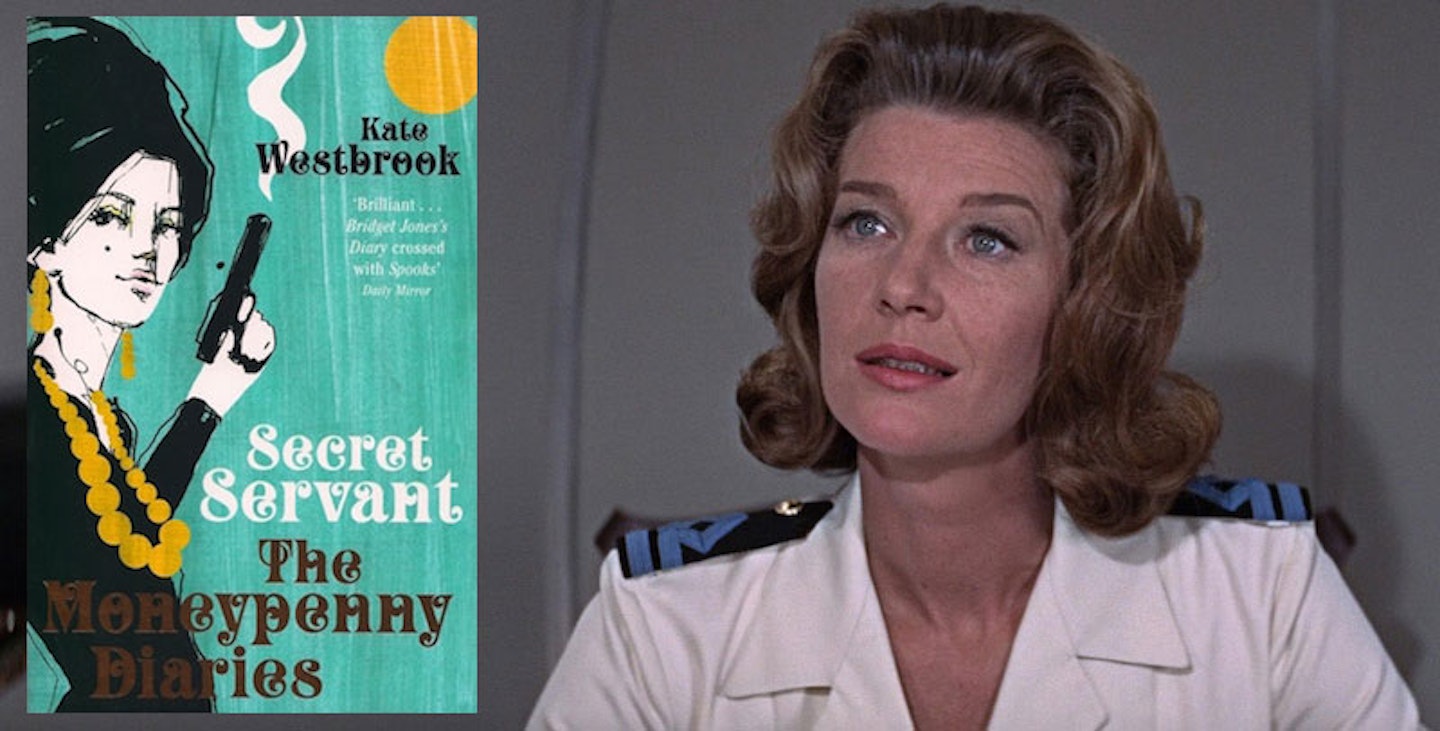
Guardian Angel / Secret Servant / Final Fling
James Bond chick-lit! Green politician Samantha Fletcher wrote the trilogy of Moneypenny Diaries (plus a couple of short stories) between 2005 and 2008, under the alias Kate Westbrook, who is supposed to be Moneypenny’s niece and posthumous editor. In a flurry of playful publicity around the first’s publication, there was some attempt to convince people that Westbrook and her aunt were real, and that "James Bond" was a pseudonym for a genuine MI6 agent, before everyone got the giggles and had to admit that it was all made up.
The diaries were the first time Moneypenny was given a back-story (in colonial Africa), and the first time we learned that her first name was Jane. These aren’t Bond novels per se, obviously, but he does feature, for example playing a role in the Cuban Missile Crisis. We also learn about the time between On Her Majesty’s Secret Service and You Only Live Twice, following Tracy’s death-by-Blofeld at the end of the former. "I liked the idea of this more vulnerable, sympathetic Bond," said Fletcher. "I still wonder at my bravery / foolhardiness!"
Young Bond
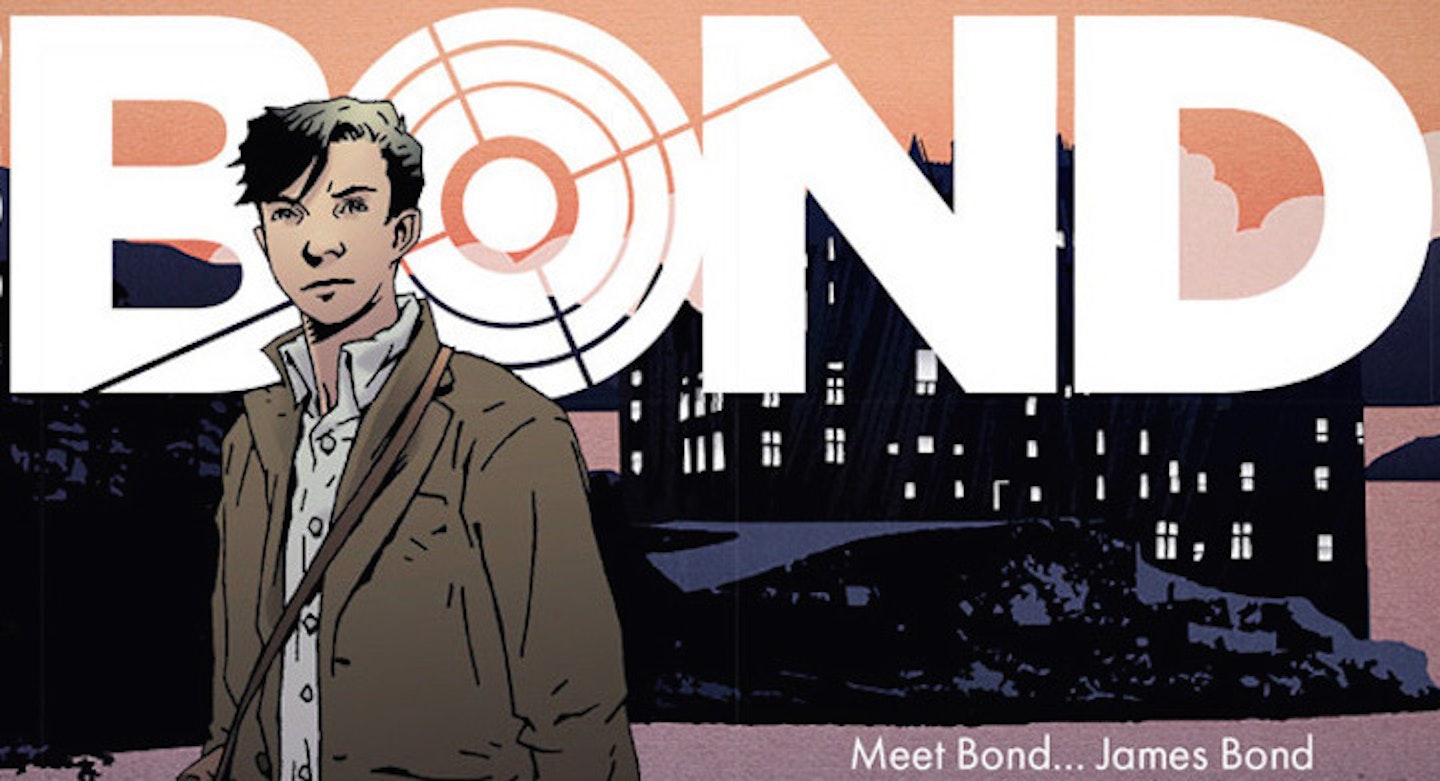
SilverFin / Blood Fever / Double Or Die / Hurricane Gold / By Royal Command / Danger Society (Charlie Higson)
Shoot To Kill / Heads You Die (Steve Cole)
Charlie Higson – he of The Fast Show – had written a handful of blackly comic and extremely violent novels during the 90s: King Of The Ants was even made into a film that almost nobody saw. Eyebrows were raised then, when Higson was revealed to have been commissioned for five children’s adventures for Young Bond, but they were lowered again following massive sales and critical acclaim.
Fleming never gave Bond an official birth-date, so Higson settled on 1920, and the books take place during the 1930s, when Bond is a schoolboy at Eton. The Fleming-phile Higson filled the books with in-jokes and references to the official canon: first novel Silverfin (2005) begins with a pastiche of Casino Royale’s opening salvo, and final instalment By Royal Command (2008) deals with the business, mentioned by Fleming in You Only Live Twice, that got Bond shunted from Eton to Austria. We take our leave of Higson’s Bond when he’s 14 though, so we don’t get to see him lose his virginity to a Parisian prostitute in 1936. The series was revived again this year by Doctor Who author Steve Cole. We'll see if he dares to pick up that particular gauntlet.
Incidentally, the idea had actually been tried once before, in 1967, with a stand-alone adventure for Bond’s “nephew” 003-and-a-half. The author of that opus (The Adventures Of James Bond Junior, credited to "R.D. Mascott") remained unknown for decades, although some suggested it was a pseudonymous Roald Dahl, who wrote the You Only Live Twice screenplay the same year. It was eventually revealed actually to be the novelist and critic Arthur Calder-Marshall.
Sebastian Faulks
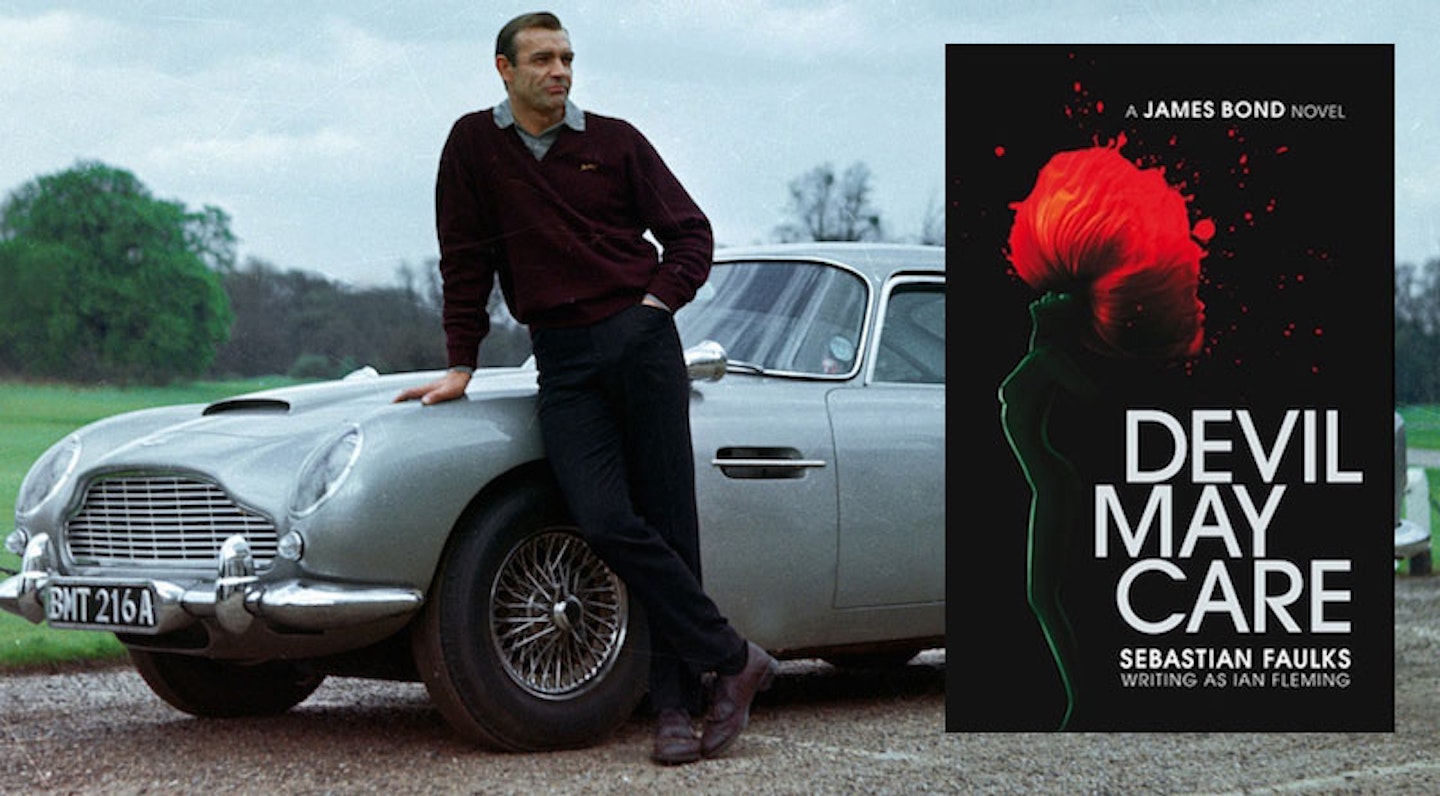
Devil May Care
When Ian Fleming Publications – the newly renamed Glidrose – wanted a Bond novel for the Ian Fleming centenary in 2008, they turned to Birdsong and Charlotte Gray author Sebastian Faulks. Initially unconvinced, Faulks relented after an enjoyable re-read of Fleming’s originals: "They were much better written than I thought, in a straightforward, newspaperman style, which I don’t have a problem with. I thought, how can I be so gullible that at my advanced age and great cynicism, I’m buying into this? But I did."
Devil May Care was explicitly written as an Ian Fleming pastiche, down to the fact that it’s credited to "Sebastian Faulks, writing as Ian Fleming." Eschewing the modern-day antics of Gardner and Benson, Faulks set the novel in 1967, with a jaded and borderline washed-up Bond considering jacking it all in until faced by deadly new enemy Julius Gorner, who wants to flood Swinging Britain with drugs and drop a nuclear plane on Russia.
Faulks’ homage borders on parody – an exhaustively long sporting confrontation; a villain with a ridiculous disability; a twist involving Bond-girl Scarlett Papava and her twin sister that you can see coming from space – and Faulks knocked it out quickly, at 2000 words a day for six weeks. But it’s good fun, and remains Penguin’s best-selling hardback title of all time.
Jeffery Deaver
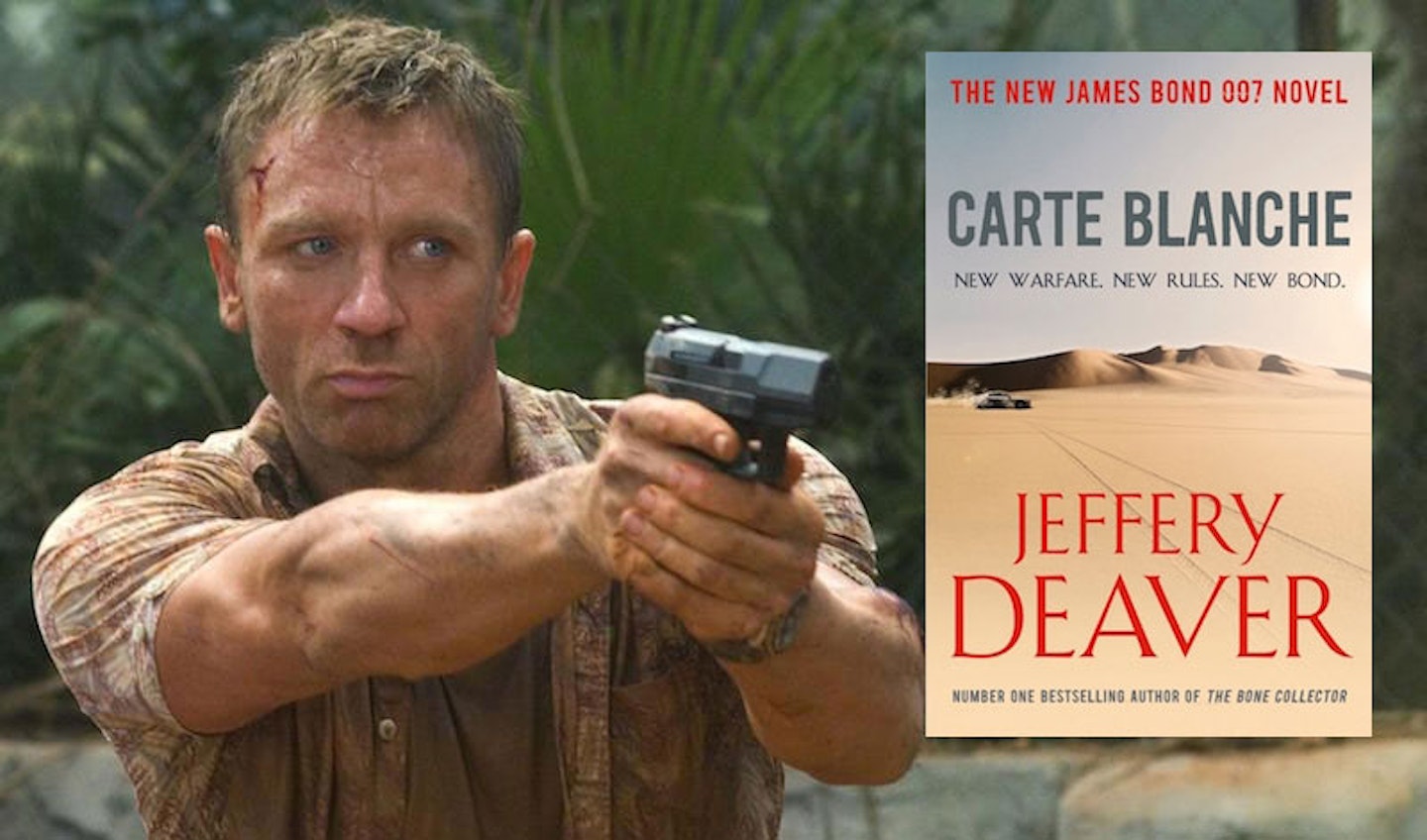
Carte Blanche
Deaver won the Crime Writers’ Association’s Ian Fleming Steel Dagger Award in 2004 for his novel Garden Of Beasts, and in his acceptance speech mentioned Fleming’s influence on him from an early age. A few years later, the Fleming estate approached him about the possibility of writing his own Bond novel. "I debated for all of ten seconds and then said yes!" he told Empire shortly before publication.
Choosing not to follow Faulks’ approach, Deaver took the Gardner/Benson road and dropped his Bond into the current era. Born in the 1970s, Deavers’ Bond is a former Royal Naval Reserve officer and veteran of the Afghan campaign, recently attached to the Overseas Development Group of the Foreign And Commonwealth Office and assigned double-0 status. His mission takes him from Serbia to South Africa, England and South Sudan, on the trail of bad guy Severan Hydt and his Green Way Organisation: a front for international terror attacks.
"This is a Jeffery Deaver novel, but I tried to fill the book with Ian Fleming’s spirit," the author told us. "My Bond is clearly recognisable as Bond, but the poor fella gets thrown into a Jeffery Deaver book, which means he gets no rest whatsoever. I made sure that my fans got a Deaver book they will recognise: short time frame [a single week]; very plot driven; esoteric information, in this case on the technical elements of spy craft; surprise endings… So it’s a Deaver book in a Deaver style, but it’s driven by the Ian Fleming-style James Bond."
William Boyd
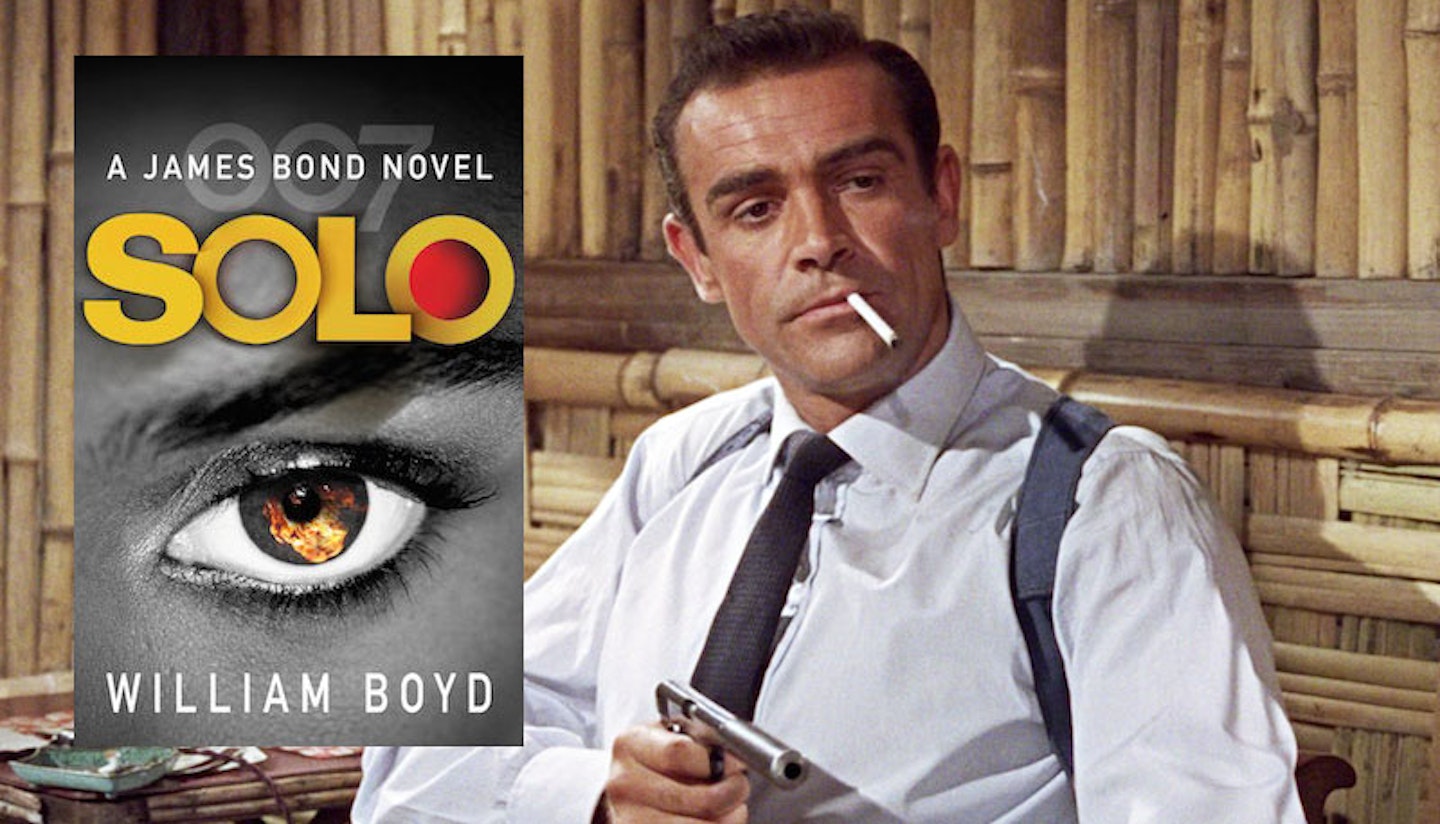
Solo
"It turns out that I’ve worked with three of the actors who have played James Bond over the years," said William Boyd on the announcement of Solo. "They’ve all starred in films that I’ve written: Sean Connery in A Good Man In Africa, Pierce Brosnan in Mr. Johnson and Daniel Craig in The Trench. The idea that these somewhat random connections with Fleming and Bond should culminate in my writing a new James Bond novel is irresistibly appealing."
Going back to the 1960s, Solo finds Bond celebrating his 45th birthday, “older and wiser” but alone (although he enjoys a dalliance with a Hammer film actress). The story, which Boyd gives an effective Graham Greene vibe, sees 007 investigating political strife in a civil war-torn African country, discovering the sinister truth behind a supposedly humanitarian organization along the way. The title refers to Bond going rogue – somewhat akin to Licence To Kill – and acting against orders as he vows revenge for a murder and follows the events to their violent conclusion.
"My father introduced me to the James Bond novels in the 1960s," Boyd said, "and I read them all then, and became very intrigued by Ian Fleming the man. From Russia With Love is my favourite. When the Ian Fleming estate invited me to write the new James Bond novel I accepted at once. For me the prospect appeared incredibly exciting and stimulating. It's a once-in-a-lifetime challenge."
Anthony Horowitz
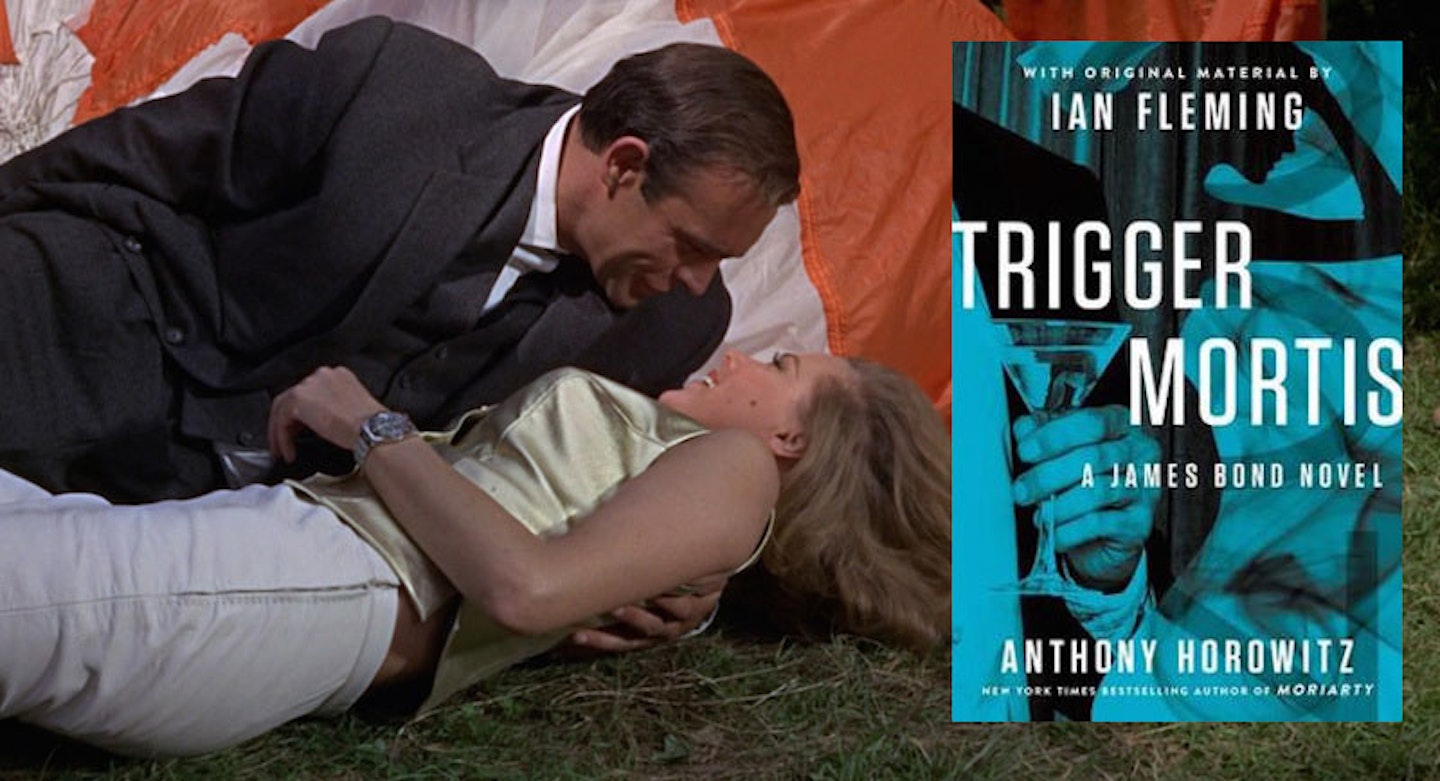
Trigger Mortis
Trigger Mortis is the newest Bond novel as we write this – published a month or so ago. Horowitz had recently written a couple of officially sanctioned Sherlock Holmes novels before he got the call for Bond. He was also the author of the bestselling Alex Rider novels for kids: themselves almost certainly an impetus for the launch of Higson’s Young Bond series.
Another period yarn, Trigger Mortis takes place immediately after Fleming’s Goldfinger, and picks up where Bond left off with Pussy Galore. Bond discovers a SMERSH plan to sabotage a motor race at Nürburgring, and goes on to foil a much larger scheme by the dastardly Soviet agency, which is working in cahoots with sinister Korean millionaire Jason Sin. Pussy departs the action in the first act (she ditches Bond for a lesbian affair with sexy racing instructor Logan Fairfax), and Bond subsequently teams up with a US Secret Service investigator called Jeopardy Lane.
Horowitz utilised unpublished Fleming material for this novel, seamlessly feeding Fleming’s Murder On Wheels treatment for an unrealised Bond TV series into the motor-racing section. Some editions include facsimiles of Fleming’s original pages as a post-script. David Oyelowo read the audiobook, prompting excitable news stories that he was the first black actor ever to "play" Bond... until everyone realised Hugh Quarshie had read Dr. No on CD years earlier to no comment whatsoever.
